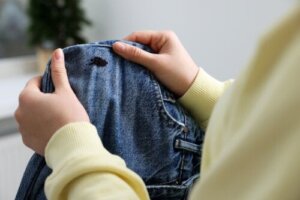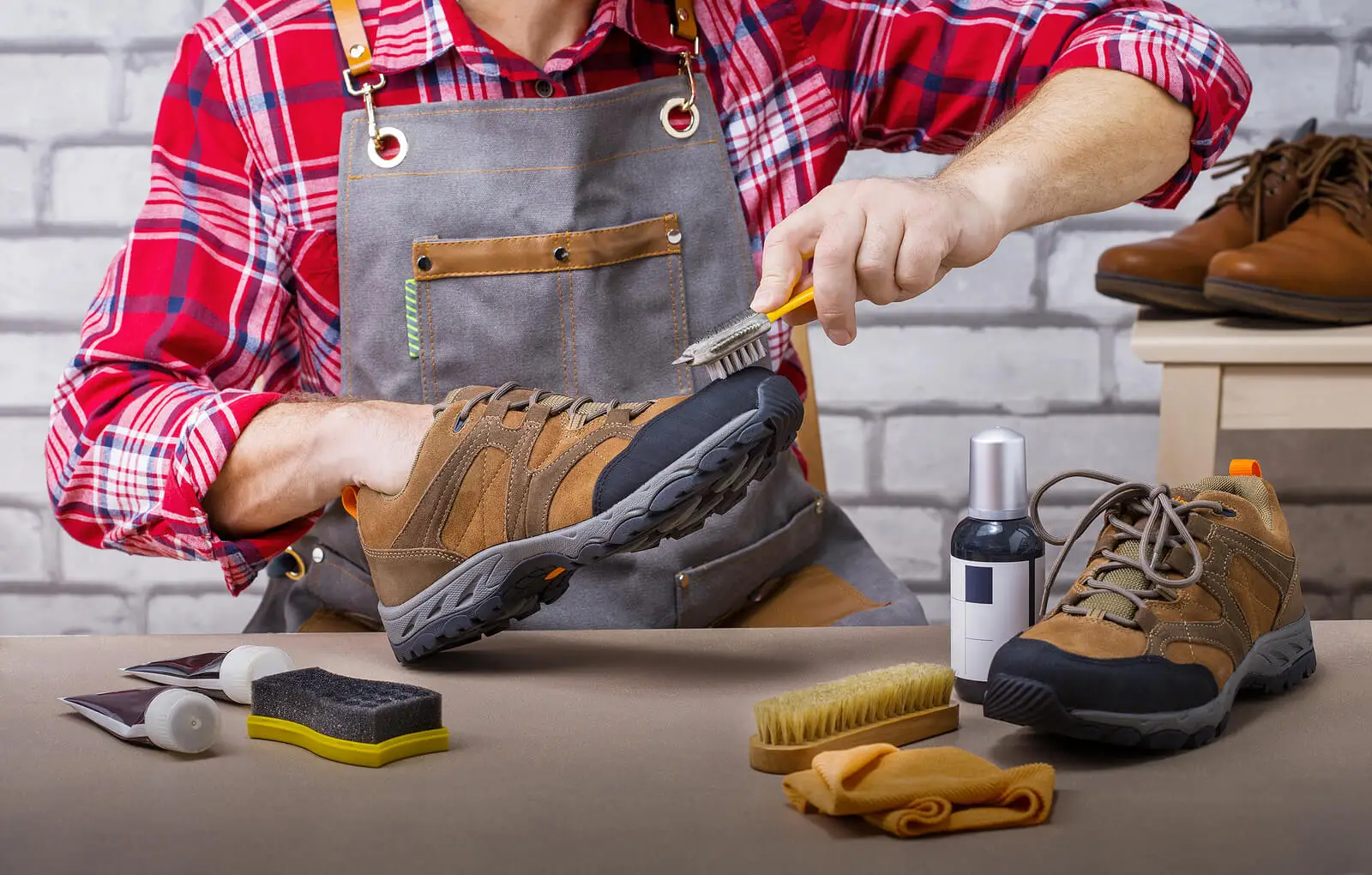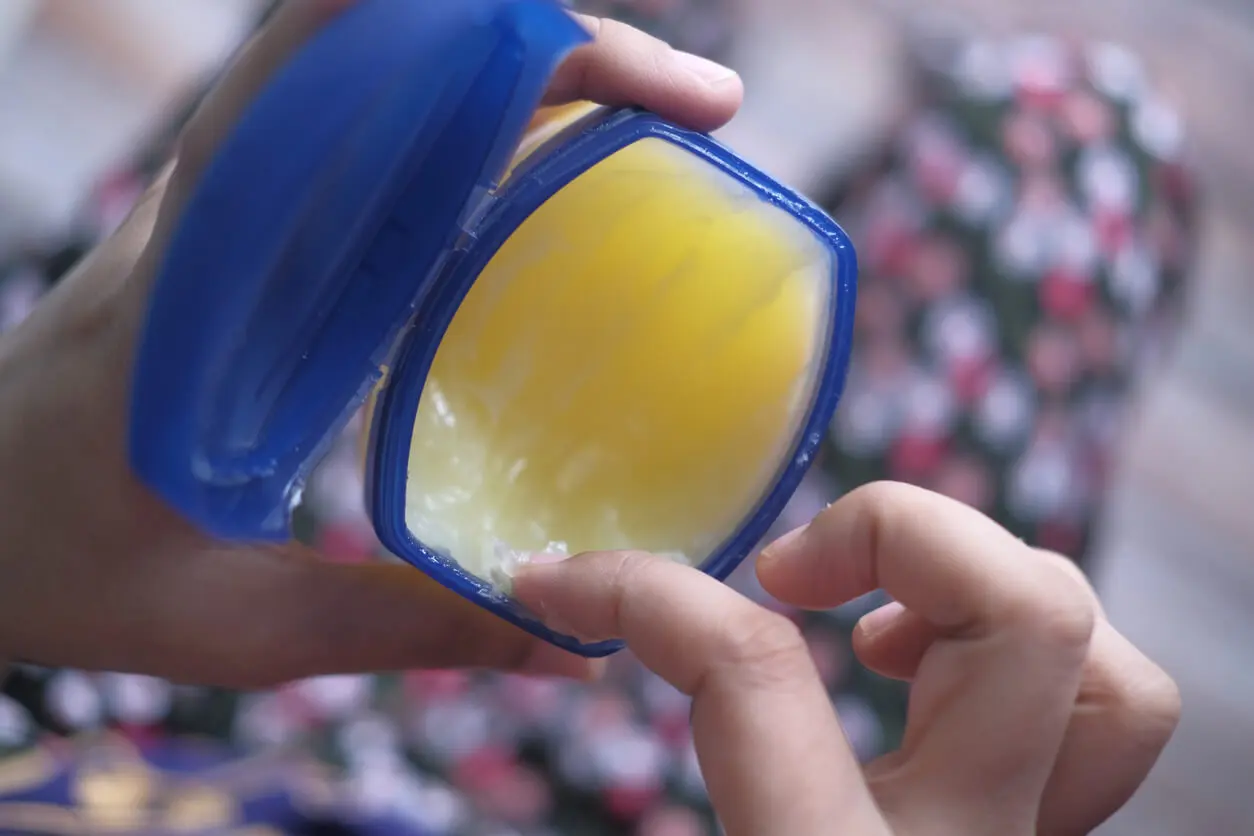8 Tricks to Remove Shoe Polish Stains from Clothing

Removing shoe polish stains left on socks, the hem of pants, or the cuff of a long sleeve is quite complicated if you don’t use the right methods. This substance has the power to deteriorate fabrics, which is why it’s so important to remove it quickly after an incident while polishing your shoes.
In order to do this the right way, we’re going to reveal some useful tips for the removal of the stains left by shoe polish, or shoeshine. But first, let’s take a closer look at shoeshine and the characteristics of the product we’re dealing with.
What is shoe polish?
One of the derivatives derived from the distillation of petroleum, wood, and coal is shoeshine. This dense compound is useful in different industrial processes, although in the domestic area, it found a place as a shoe cleaner.
The Technological Institute of Tuxtla Gutierrez disclosed in a research work that such pitch, exclusively for shoes, contains oil, beeswax, petroleum jelly, kerosene, pigment, and varsol. All the ingredients are mixed when hot, then it rests and, when it solidifies, the wax is obtained.
The properties of shoeshine offer impermeability and adhesiveness; it’s also not very volatile. It comes in creamy or liquid form. And although black is the most common, you can find it in other colors such as the following:
- Gray
- Wine
- Blue
- Brown
- Red
- Bone
- White
- Neutral

We think you may be interested in reading this, too: How to Remove Resin Stains from Your Clothes Without Damaging Them
Tips to remove shoeshine stains from clothes
If a shoeshine stain gets on your clothes it’s necessary to think with a cool head before taking action, since washing immediately is very likely to make the incident worse.
General recommendations from Stain Solutions, a University of Illinois Extension, guide the use of penetrating stain removers for clothing, specifying that aerosol sprays are more convenient. Instructions call for saturating the stained area with the spray and waiting 1 minute for it to take effect.
When the stain is stubborn, consider light soaking in fabric bleach or oxygen bleach, as well as dry-cleaning solvents, working around the back of the soil with absorbent paper towels.
In all cases, rinse with plenty of water. Other simpler alternatives are presented below.
1. Use nail polish remover
Wet a piece of white cloth with nail polish remover and dampen the polish stain. Wait a few minutes before washing with neutral soap to ensure no traces of shoe polish remain.
2. Freeze the garment
Actually, it’s not a matter of putting the clothes for hours in the freezer, but the use of ice cubes. The technique is to fill a plastic bag with 5 pieces and rub it over the smeared part.
After a few minutes, the polish will be cold and hard, making it easy to scrape off with your fingers, a spatula, or a table knife.
3. Clean with baking soda
Chemical Safety Fact.org points out that the chemical properties of baking soda improve the efficiency of laundry soap by increasing the pH level in the water, which is beneficial for fighting dirt on fibers. This characteristic is advantageous to get rid of shoeshine stains.
In this option, the procedure consists of removing the excess tar, to submerge the clothes in a gallon that stirs cold water with 3 tablespoons of baking soda. After 5 minutes of soaking, wash the garment as you normally would.
4. Wash with detergent and additives
Detergent is more effective if you combine it with glycerin and alcohol. The stain-removing effect is achieved by rubbing the garment for several minutes with glycerin. The next step is to soak with liquid detergent and water.
After rinsing, you immerse the garment in a bucket containing a dilution of alcohol in water. To finish this trick, you carry out the official washing in cold water and liquid detergent. Drying is in the open air.
5. Spread Vaseline over the stain
Softening the stain with Vaseline is another way to make it easier to remove. To do this, just spread a little of the substance on a cloth and gently rub the affected area, until you see no traces of the dye. The last thing to do is to wash the piece with neutral soap and by hand.
It’s also feasible to leave the petroleum jelly for a while to do its job. Then, remove with a cloth and wash.

Like this article? You may also like to read: How To Remove Limescale and Calcium Stains from the Shower
6. Apply alcohol
To remove liquid shoe polish stains on clothing, first blot the soil with absorbent paper; second, wipe the pigmentation with a towel dampened with cleaning alcohol and water.
Repeat the process until the clothes are spotless, dipping the cloth in the mixture as many times as necessary. When the stain disappears, wash the garment with detergent and close the cycle with fabric softener.
7. Peel it away with a spatula
The edge of a spatula is a great help to remove lumps of shoeshine. There is not much to explain about this trick, the basics are to tackle the stain with the instrument and then wash the clothes.
8. Wet with vinegar or hydrogen peroxide
Mixing water with vinegar or hydrogen peroxide helps in the mission of removing shoeshine stains from clothes. If you take them into account, don’t forget the strict washing with soap and water.
Precautions when removing shoeshine stains from clothes
According to a guide from the Texas Agricultural Extension Service, the main thing before attacking the stains is to read the label of the garment. Depending on the labeled instructions, it’s possible to practice some of the home methods we’ve share here. However, if it’s a fine textile, professional dry cleaning is recommended.
As a final recommendation, make sure to avoid the heat of the dryer, irons, and the sun on the stain, because it will make it soak in more. First, wash the clothes. Then, once there are no traces of shoeshine left, you can leave them to dry.
All cited sources were thoroughly reviewed by our team to ensure their quality, reliability, currency, and validity. The bibliography of this article was considered reliable and of academic or scientific accuracy.
- Angulo Ruiz V. Formulación óptima de betún para calzado a partir de aceite comestible quemado. Trabajo profesional. Instituto Tecnológico de Tuxtla Gutiérrez. México; 2015. http://repositoriodigital.tuxtla.tecnm.mx/xmlui/bitstream/handle/123456789/788/51114.pdf?sequence=1&isAllowed=y
- Bicarbonato de sodio. Chemical Safety Facts.org. https://es.chemicalsafetyfacts.org/es/bicarbonato-de-sodio/
- Brown P. Guía rápida para quitar las manchas. Servicio de Extensión Agrícola de Texas. Estados Unidos. https://hays.agrilife.org/files/2011/08/stainremovalspanish_2.pdf
- Lustra zapatos. Extensión de la Universidad de Illinois. Estados Unidos. https://web.extension.illinois.edu/stain/staindetail.cfm?ID=134
This text is provided for informational purposes only and does not replace consultation with a professional. If in doubt, consult your specialist.








